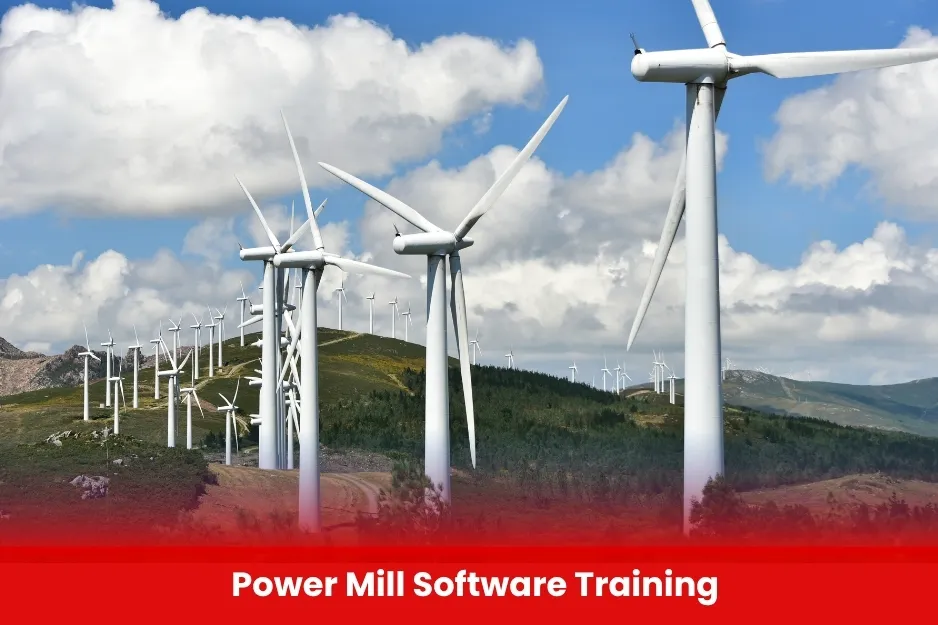Power Mill Software Training
BURAAQ UK is a modern and professional training provider dedicated to equipping students and professionals with advanced engineering and technical software skills. One of its standout offerings is the PowerMill Software Training, specifically designed for individuals working in CNC machining and advanced manufacturing industries.This training aims to develop expertise in Autodesk PowerMill, a leading CAM (Computer-Aided Manufacturing) software used to create complex and highly precise toolpaths for 3-axis to multi-axis CNC machines. BURAAQ UK delivers this course with a strong hands-on and practical approach, allowing learners to work on real-world industrial projects and scenarios.

Aim of Power Mill Software Training
The aim of the PowerMill Software Training offered by BURAAQ UK is to equip participants with the practical skills and technical knowledge required to efficiently program, simulate, and optimize toolpaths using Autodesk PowerMill for advanced CNC machining operations.
Course Overview
Power Mill Software Training
- Minimum Requirement:
Diploma or Degree in Mechanical Engineering, Manufacturing Technology, Mechatronics, Production Engineering, or related technical fields. - Preferred (but not mandatory):
Bachelor’s degree in Engineering or Technology.
| Course Code | Curriculum Title | Credit | DLH |
|---|---|---|---|
| BUK1142-1 | Introduction | 2 | 15 |
| BUK1142-2 | Graphic user interface | 2 | 15 |
| BUK1142-3 | creating and editing Work planes | 2 | 15 |
| BUK1142-4 | Tool creation and Tool database | 2 | 15 |
| BUK1142-5 | Boundaries types | 2 | 15 |
| BUK1142-6 | 2D Curve Area clearance | 2 | 15 |
| BUK1142-7 | 2Dcurve profile | 2 | 15 |
| BUK1142-8 | Model Area Clearance Part 1 | 2 | 15 |
| BUK1142-9 | Slice Area clearance | 2 | 15 |
| BUK1142-10 | Optimized constant Z finishing | 2 | 15 |
Objectives
- Introduction
- Graphic user interface
- creating and editing Work planes
- Tool creation and Tool database
- Block setup
- Tool path Connection Part-1
- Tool path Connection Part-2
- Boundaries types
- 2D Curve Area clearance
- 2D Curve Area clearance
- 2Dcurve profile
- Face Milling
- 2D Curve Machining Project
- Chamfer Milling
- Model Area Clearance Part 1
- Model Area Clearance (Raster Style)
- Create an NC program in power mill
- Model Area Clearance (Limit options)
- Model Area Clearance (Order option)
- Vortex Machining
- Model Area Clearance (Flat machining & High speed)
- Model Area Clearance (Component thickness)
- Model Rest Area Clearance
- Slice Area clearance
- Slice Profile
- Feature area clearance
- Feature face Milling
- Feature Pocket area clearance
- Feature Pocket Profile
- Feature Rest Area Clearance
- Feature chamfer Milling
- Feature Slot Machining
- Feature Finishing
- Feature Rest Profile
- Feature Top fillet Milling
- 3D offset finishing
- 3D Offset finishing 2.0
- Offset Flat Finishing
- Offset Flat finishing 2.0
- Constant Z finishing
- Parametric Offset finishing
- Raster Finishing
- Optimized constant Z finishing
- Corner Finishing
- Corner Pencil finishing
- Corner Multi pencil finishing
- Transform Toolpath
- Radial finishing
- Spiral Finishing
- Steep and shallow finishing
- Pattern finishing
- Pattern finishing 2.0
- Parametric spiral finishing
- Surface finishing
- Wireframe Profile
- Single Peck Drilling
- Break chip drilling
- Helical Drilling
- Profile Drilling
- Engineering Students
- CNC Machine Operators / Programmers
- Manufacturing & Design Professionals
- All Modules within this qualification are assessed internally by the approved training Centre and externally verified by BURRAQ UK. The program uses a criterion-referenced assessment approach to ensure that learners successfully meet all required learning outcomes.
- A Pass in any unit is granted only when the learner submits valid, reliable, and authentic evidence that demonstrates achievement of the assessment criteria. The Assessor is responsible for reviewing this evidence and confirming that the learner has attained the expected standard.
- To guarantee fairness, transparency, and consistency, assessors are required to maintain a detailed audit record, clearly documenting the basis of their assessment decisions in line with quality assurance requirements.
